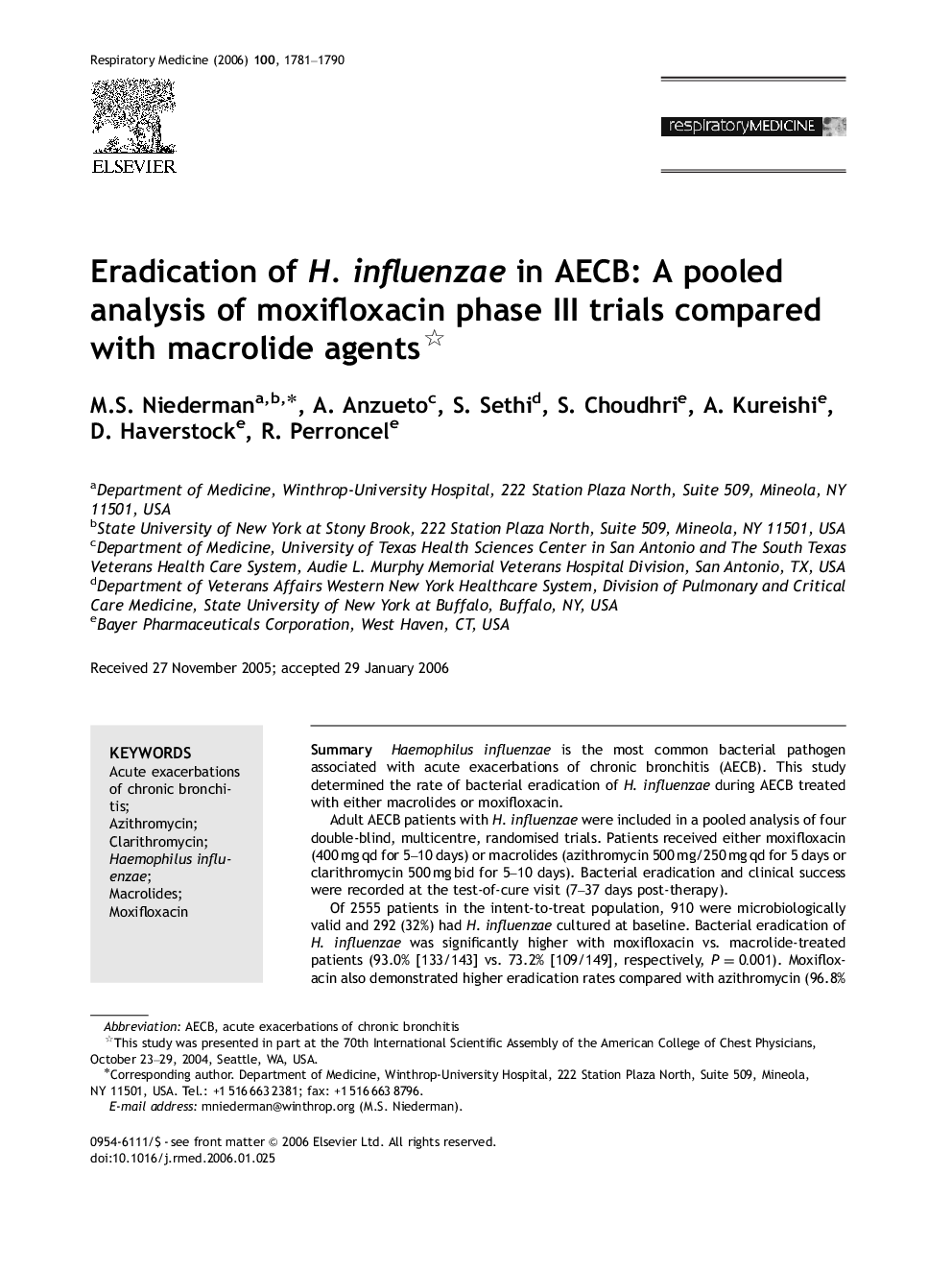| Article ID | Journal | Published Year | Pages | File Type |
|---|---|---|---|---|
| 4212158 | Respiratory Medicine | 2006 | 10 Pages |
SummaryHaemophilus influenzae is the most common bacterial pathogen associated with acute exacerbations of chronic bronchitis (AECB). This study determined the rate of bacterial eradication of H. influenzae during AECB treated with either macrolides or moxifloxacin.Adult AECB patients with H. influenzae were included in a pooled analysis of four double-blind, multicentre, randomised trials. Patients received either moxifloxacin (400 mg qd for 5–10 days) or macrolides (azithromycin 500 mg/250 mg qd for 5 days or clarithromycin 500 mg bid for 5–10 days). Bacterial eradication and clinical success were recorded at the test-of-cure visit (7–37 days post-therapy).Of 2555 patients in the intent-to-treat population, 910 were microbiologically valid and 292 (32%) had H. influenzae cultured at baseline. Bacterial eradication of H. influenzae was significantly higher with moxifloxacin vs. macrolide-treated patients (93.0% [133/143] vs. 73.2% [109/149], respectively, P=0.001P=0.001). Moxifloxacin also demonstrated higher eradication rates compared with azithromycin (96.8% vs. 84.6%, P=0.019P=0.019) and clarithromycin (90.1% vs. 64.2%, P=0.001P=0.001) analysed separately. Clinical success was 89.5% (128/143) for moxifloxacin vs. 85.2% (127/149) for the macrolide group (P=0.278P=0.278); similar results were found when moxifloxacin was compared individually with each macrolide.For patients with AECB due to H. influenzae, moxifloxacin provided superior bacterial eradication rates than macrolide therapy.
